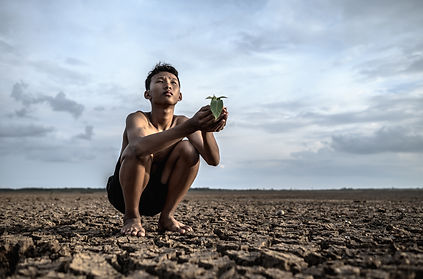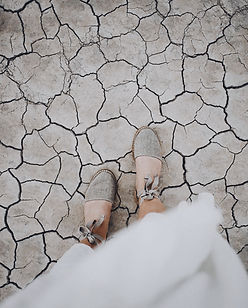
Climate change and social justice
Climate change and social justice are two topics that we do not often hear of together. When we hear about climate change, global warming tends to be the first thing that we think about. However, there are many instances where climate change and social justice issues occur together. Typically, we learn about how climate change is affecting the environment and eventually will affect all of us, but we rarely learn about the people who are already directly seeing and living with its effects.
Water Insecurity
American Indians are one of the groups of people that are already facing these issues. Social and environmental justice researchers conducted a study that examined the relationship between water insecurity and indigenous health (Mitchell, 2019). Climate change has caused water insecurity to increase. For many indeginous communities, water represents identity, culture, and much more. Many of these communities do not have sustainable water resources; they deserve health equity and the right to clean and safe water.

Photo by: Joe Whitson

Photo by: @Jcomp

Housing and Floods
The United States is a large country with a lot of land and a lot of people. Many people are already suffering the consequences of climate change. Communities that are low income and face social injustices have a harder time and experience dealing with climate change (Siders, 2019). In response, the United States has a plan to relocate people who live in flood-vulnerable areas by funding buyout and retreat programs. Flooding is occurring more often because sea levels are rising. It is possible that these buyout programs the US has planned can neglect these communities. According to Siders, “decisions often involve political motivations and rely on cost-benefit logic that may promote disproportionate retreat in low-income or minority communities, continuing historic patterns of social inequity” (Siders, 2019). A review of some of these programs suggests that through “increased transparency, explicit focus on social inequality, longer-term and larger-scale holistic approaches, …” they will not neglect these communities (Siders, 2019). Communities that face social inequalities are dealing with this, plus the effects of climate change. Indeginous communities in particular, are one of the groups who are having most trouble with climate change.
Photo by: Maria Aguirre
Land Conservation
Climate justice organizer and lobbyist, Mytsi Babineau, expresses her concern for her community and their land. Mysti grew up in Minnesota as an Ojibwe, growing up she was taught the importance of taking care of our planet. Unfortunately, climate change has had a huge impact on her community. In order to help them and her family, she has been working in Washington DC with Minnesota 350. Mysti shares that she has tried advocating for her communities by working directly with people, working in construction, and currently lobbying at the capitol in Washington D.C., with the goal of making the environment a safe and clean place for her kids to grow up in (Babineau, 2019). People like Mytsi truly care about our planet and the environment, it is important to spread this knowledge regarding climate change and social justice to contribute to the conservation of Earth.

Works Cited
National Geographic Society. “Pollution.” National Geographic Society, 9 Oct. 2012, www.nationalgeographic.org/encyclopedia/pollution/.
“Pollution.” WWF, World Wildlife Fund, www.worldwildlife.org/threats/pollution.
“Air Pollution.” National Geographic Society, www.nationalgeographic.org/encyclopedia/air-pollution/print/.
